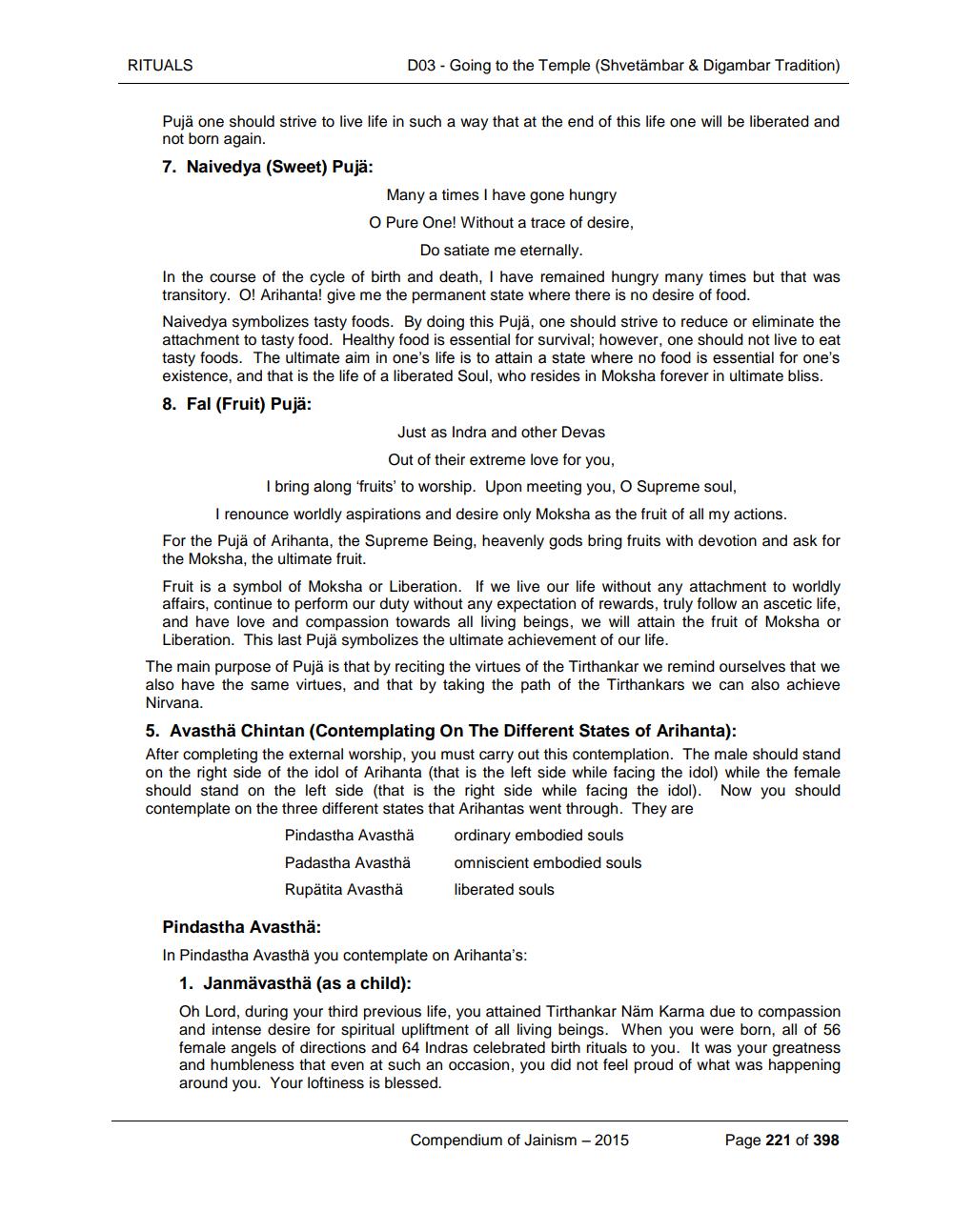________________
RITUALS
DO3 - Going to the Temple (Shvetämbar & Digambar Tradition)
Pujä one should strive to live life in such a way that at the end of this life one will be liberated and not born again. 7. Naivedya (Sweet) Pujä:
Many a times I have gone hungry O Pure One! Without a trace of desire,
Do satiate me eternally. In the course of the cycle of birth and death, I have remained hungry many times but that was transitory. O! Arihanta! give me the permanent state where there is no desire of food. Naivedya symbolizes tasty foods. By doing this Pujä, one should strive to reduce or eliminate the attachment to tasty food. Healthy food is essential for survival; however, one should not live to eat tasty foods. The ultimate aim in one's life is to attain a state where no food is essential for one's existence, and that is the life of a liberated Soul, who resides in Moksha forever in ultimate bliss. 8. Fal (Fruit) Pujä:
Just as Indra and other Devas
Out of their extreme love for you, I bring along "fruits' to worship. Upon meeting you, o Supreme soul, I renounce worldly aspirations and desire only Moksha as the fruit of all my actions. For the Puja of Arihanta, the Supreme Being, heavenly gods bring fruits with devotion and ask for the Moksha, the ultimate fruit. Fruit is a symbol of Moksha or Liberation. If we live our life without any attachment to worldly affairs, continue to perform our duty without any expectation of rewards, truly follow an ascetic life, and have love and compassion towards all living beings, we will attain the fruit of Moksha or
Liberation. This last Pujä symbolizes the ultimate achievement of our life. The main purpose of Puja is that by reciting the virtues of the Tirthankar we remind ourselves that we also have the same virtues, and that by taking the path of the Tirthankars we can also achieve Nirvana. 5. Avasthä Chintan (Contemplating On The Different States of Arihanta): After completing the external worship, you must carry out this contemplation. The male should stand on the right side of the idol of Arihanta (that is the left side while facing the idol) while the female should stand on the left side (that is the right side while facing the idol). Now you should contemplate on the three different states that Arihantas went through. They are
Pindastha Avasthä ordinary embodied souls Padastha Avasthä omniscient embodied souls Rupätita Avasthä liberated souls
Pindastha Avasthä: In Pindastha Avasthä you contemplate on Arihanta's:
1. Janmävasthä (as a child): Oh Lord, during your third previous life, you attained Tirthankar Näm Karma due to compassion and intense desire for spiritual upliftment of all living beings. When you were born, all of 56 female angels of directions and 64 Indras celebrated birth rituals to you. It was your greatness and humbleness that even at such an occasion, you did not feel proud of what was happening around you. Your loftiness is blessed.
Compendium of Jainism - 2015
Page 221 of 398




